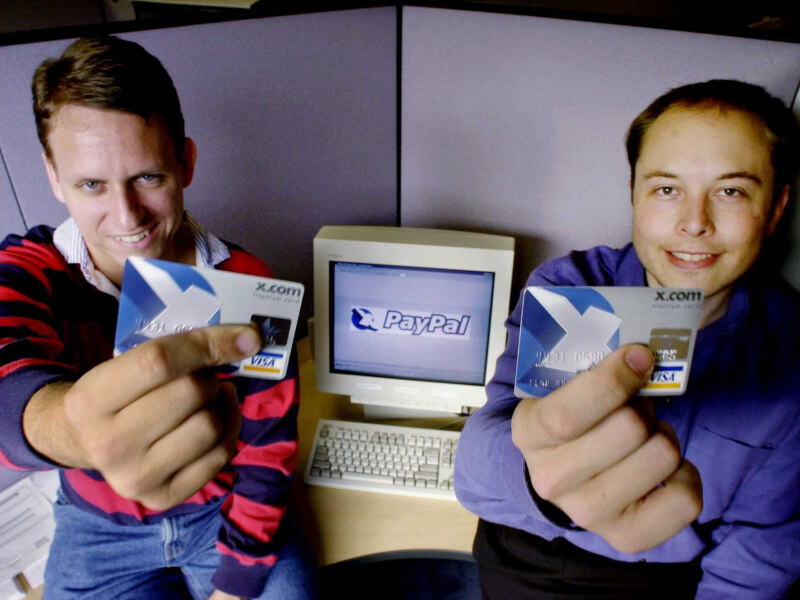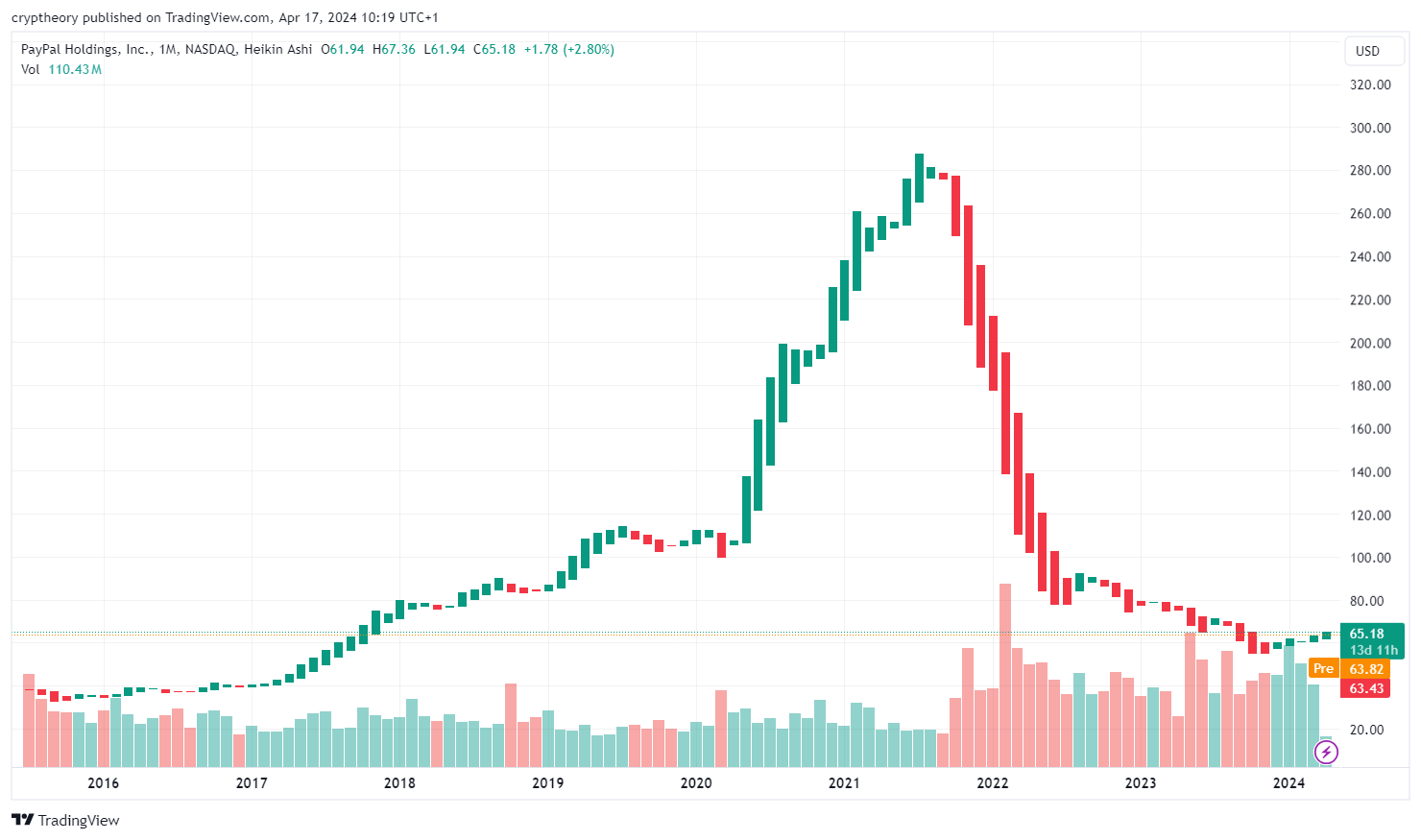PayPal – History and Future
5 min readPayPal, founded in December 1998, has become one of the most recognizable names in digital payments worldwide. Initially conceived as a solution for simple money transfers via PalmPilot devices, it quickly evolved into a comprehensive payment system essential for e-commerce. This introduction explores PayPal’s journey from an innovative idea to a financial powerhouse, highlighting its role in shaping online commerce and personal finance.
PayPal: Origins and Establishment
PayPal was founded by Elon Musk, Peter Thiel, Max Levchin, and Luke Nosek as part of the broader startup project X.com, which aimed to revolutionize financial services using technology. PayPal quickly became an independent entity focused on payment solutions, leading to its rapid expansion through easy integration with online auction platforms, particularly eBay.
PayPal – History and Future
PayPal’s beginnings were characterized by rapid development and innovation. In its early days, the company focused on payment solutions between PDA devices but soon identified e-commerce as a major growth area. 2002 was a milestone year when PayPal went public and was shortly thereafter acquired by eBay for $1.5 billion in stock. This partnership dramatically raised its profile and allowed for deeper integration with online payments.
Expansion and Innovation
Since its incorporation into eBay in 2002, PayPal has continued to expand its services and global reach. Not only did it become the preferred payment method on eBay, but it also extended its reach beyond this platform, offering its services to a wide range of e-commerce stores. A significant milestone was the introduction of PayPal Mobile in 2006, enabling users to send money via mobile phones, key for adaptation in the rapidly developing world of mobile technologies.
Independence from eBay
In 2015, PayPal separated from eBay and became an independent publicly traded company. This step allowed PayPal to respond more quickly to changing market demands and to innovate its technologies and services. Since then, the company has intensified its efforts in acquisitions, purchasing firms that could complement or expand its product portfolio, including international payment platforms and security technologies.
Innovation and Technological Progress
PayPal continuously strives to stay at the forefront of technological development in digital payments. One of its key innovative steps was the introduction of a one-click system, which enabled users to make payments faster and more securely than ever before. Additionally, PayPal expanded its services to include PayPal Credit, a virtual credit option for purchases that users can pay off over time.
Mobile Payments and Service Expansion
Entering the mobile payments sector was a crucial step for PayPal. The PayPal app for iOS and Android allowed users to manage their accounts, send and receive money, and conduct transactions from anywhere. In recent years, the company has also been experimenting with the integration of artificial intelligence and blockchain technologies to provide even safer and more efficient services.
Legal and Regulatory Issues
PayPal has faced various legal and regulatory challenges in many countries, complicating its operations and expansion. From accusations of monopolistic behavior to issues with compliance with local financial regulations, the company had to navigate a complex legal environment to maintain its global presence.
Market Competition
The digital payments market is highly competitive, with many firms trying to gain a market share. PayPal must face competition from traditional banks expanding their digital services and from new startups that bring innovations such as cryptocurrencies and peer-to-peer payments.
The Future of PayPal
Given the rapid development of technologies such as cryptocurrencies and blockchain, PayPal is looking for ways to integrate these new trends into its ecosystem. The company recently announced that it will allow its users to buy, hold, and sell cryptocurrencies directly from their PayPal accounts, a step towards further diversification of their services.
Strategy for Sustained Growth
PayPal is focusing on expanding its international operations and providing a wider range of financial services to better compete on a global scale. It also aims to strengthen its partnerships with other financial institutions and technology companies to remain relevant in the rapidly changing financial sector.
Historical and Current Performance of PayPal’s Stock
In this section, we’ll discuss more about the performance of PayPal’s stock.
Historical Overview
Originally part of eBay, PayPal was relisted on the stock exchange as an independent publicly traded company in July 2015. Its shares were offered at an initial price of approximately $38 per share. This move came after investor pressure for eBay and PayPal to continue separately, which would allow both companies to better focus on their primary business models and increase shareholder value.
Since its “re-release” on the stock market, PayPal has shown strong growth and expansion of its market activities. In the following years, the company invested in new technologies and expanded its service portfolio, which positively reflected in its market value and stock performance. The growth in PayPal’s market capitalization was supported by both organic growth and a series of acquisitions that expanded its presence on the global market.
Stock Performance from IPO to the Present
Since its IPO in 2015, PayPal’s shares have shown impressive performance with several significant rises and periods of correction. In the first year after the IPO, PayPal’s stock rose by more than 50%. This growth was driven by investor optimism about the company’s potential to dominate the rapidly growing sector of digital payments.
In subsequent years, the company continued to expand its operations and witnessed positive market reception due to innovations such as integration with mobile payments and entry into the digital wallets and financing sector. In 2021, PayPal’s shares reached an all-time high when their price exceeded $287 per share, reflecting the company’s strong financial performance and stable market position.
Current Performance and Market Outlook
Currently, PayPal faces a number of challenges, including increased competition, regulatory pressure, and macroeconomic uncertainties that are affecting its stock price. Although the company’s market capitalization has decreased from historical highs, PayPal remains a strong player in the digital payments market with good prospects for future growth.
Financial statement analysis shows that PayPal maintains healthy financial fundamentals with robust revenue and profitability. The company’s strategy for the coming years includes further diversification of services, expansion into new markets, and the use of technological innovations, such as artificial intelligence and blockchain, to secure its position as a leader in financial technology.
Conclusion
PayPal represents an example of a company that has not only survived but also thrived in the changing world of financial technology through continuous innovation and adaptation. As a pioneer in the field of digital payments, it has remained at the forefront of the industry despite facing many challenges. Its future looks promising thanks to a strategy of adapting to new technologies and expanding its services, which will enable it to maintain a significant role in the digital payments market. Investors should continue to monitor developments in this area to understand how new market dynamics may reflect in its future financial results and stock value.








